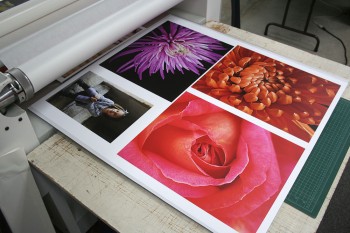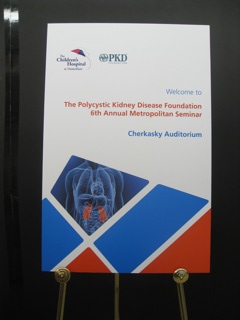Last week we posted an important bulletin from 3M regarding the application of graphics on walls with low-VOC paints, which can cause adhesion issues during application. You should go check that out, but here’s the rest of the story for basic application guidelines on walls and other sign materials…
 There are basic details that should not be overlooked as graphics are being prepared for application, and the preparation has to begin before the beginning. First, be sure to allow the ink to dry and set for a minimum of 24 hours. Then, it’s safe to apply to whatever substrate you’re using. Here, we’ll stick to flat, relatively smooth surfaces, like sign boards and barricades, rather than irregular ones with compound curves, or other surfaces like glass, carpets, and concrete.
There are basic details that should not be overlooked as graphics are being prepared for application, and the preparation has to begin before the beginning. First, be sure to allow the ink to dry and set for a minimum of 24 hours. Then, it’s safe to apply to whatever substrate you’re using. Here, we’ll stick to flat, relatively smooth surfaces, like sign boards and barricades, rather than irregular ones with compound curves, or other surfaces like glass, carpets, and concrete.
With just about any flat material – whether plastic, PVC, sheet rock or other wall materials, aluminum, or MDO – the surface should be as clean as possible. Don’t use soap, Windex, or any ammonia-based cleaners as they leave a residue that will affect the vinyl’s adhesion.
The best bet is either rubbing alcohol or other cleaners that evaporate quickly, such as those manufactured by Rapid Tac, which are designed specifically for vinyl application. Use cheap paper towels to wipe down the substrate as they’re less likely than rags, towels, or more expensive paper towels to leave anything behind.
Also, make sure the surface hasn’t been freshly painted. Installation professional Keith Bernard of Road Signs in Sarasota, Fla., says to avoid alcohol on freshly painted surfaces. “A lot of interior barricades you find at malls are drywall with a fresh coat of primer, and if you use alcohol you run the risk of smearing the paint, which will cause adhesion problems with the material you’re installing,” he says.
Some people will scuff the substrate, particularly a PVC-based material like Sintra, to create more surface area for the adhesive to stick to, but this can create ridges and pockets in the material that might actually defeat the purpose.
Foam boards need less preparation, but if you’re cutting them to a different size to fit the application, make sure there’s no dust on the board before you apply the graphic. If you have a laminator, use it to apply the graphic to the material, even if you’re not laminating the print. It’s a relatively quick and easy way to apply the vinyl to the substrate.
However, if you usually run rigid materials on one side of the laminator each time, the rollers will tend to wear down on that side, causing poor adhesion and de-lamination. One solution is to mix it up, and run materials through each side of the laminator and in the middle.
To check your laminator, set the nip to zero, and if there’s any daylight between the rollers it means you’re getting wear spots, or the rollers are out of alignment. Either way, it’s a good idea to regularly check this.
Once you’ve applied the graphic to the board, whether you’re using a laminator or not, it’s important to let the adhesive set for at least two hours, and ideally 24 hours, before you trim. This is especially important if you’re using a mechanical cutting tool, like a CNC router. If you’re not using a router, make sure to use a sharp blade on a hard surface, such as tempered glass. This will help eliminate any edge lift problems.
If you’re installing in the field, the same cleaning regimen applies, as well as making sure to follow the manufacturer’s recommendations regarding the best temperature range for installation. But out here you often have to deal with removing the previous graphics, such as you would with an existing sign board. In this case, bring a heat gun or a propane torch. If the board is small enough (say 4×8 at most), the heat gun should be sufficient, but a bigger flame is needed to remove larger graphics.
And, have tweezers and a pin or needle handy. The tweezers will help with small, stubborn pieces of vinyl, particularly if the previous graphics include cut vinyl lettering. The pin is for getting rid of any bubbles you might have as you apply the new graphic.
Sometimes, it’s just easier and more economical to have a professional installer do it for you, particularly for larger graphics. If someone who specializes in vinyl installation can do it two to four times faster, you might better off using the time and effort you’d spend installing doing what you do best.
Installation may be the most important component since it’s what the customer and the public ultimately see. A professional installer can make it look better and help avoid wasting material in the process.
If you need any help or advice, give one of our experts a call at 800-453-9538.

